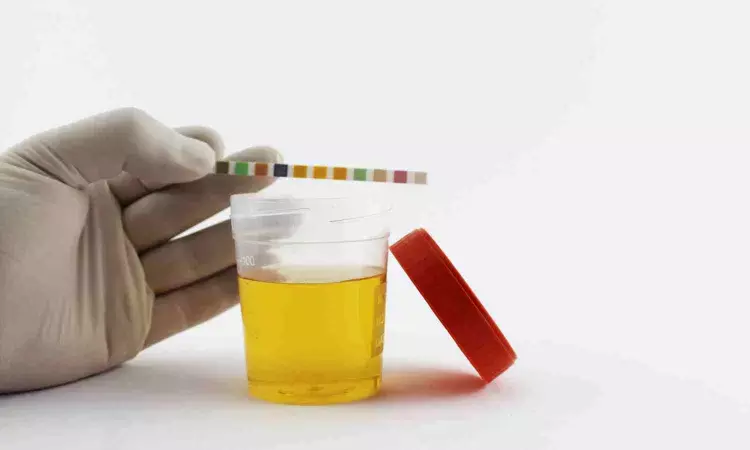- Home
- Medical news & Guidelines
- Anesthesiology
- Cardiology and CTVS
- Critical Care
- Dentistry
- Dermatology
- Diabetes and Endocrinology
- ENT
- Gastroenterology
- Medicine
- Nephrology
- Neurology
- Obstretics-Gynaecology
- Oncology
- Ophthalmology
- Orthopaedics
- Pediatrics-Neonatology
- Psychiatry
- Pulmonology
- Radiology
- Surgery
- Urology
- Laboratory Medicine
- Diet
- Nursing
- Paramedical
- Physiotherapy
- Health news
- Fact Check
- Bone Health Fact Check
- Brain Health Fact Check
- Cancer Related Fact Check
- Child Care Fact Check
- Dental and oral health fact check
- Diabetes and metabolic health fact check
- Diet and Nutrition Fact Check
- Eye and ENT Care Fact Check
- Fitness fact check
- Gut health fact check
- Heart health fact check
- Kidney health fact check
- Medical education fact check
- Men's health fact check
- Respiratory fact check
- Skin and hair care fact check
- Vaccine and Immunization fact check
- Women's health fact check
- AYUSH
- State News
- Andaman and Nicobar Islands
- Andhra Pradesh
- Arunachal Pradesh
- Assam
- Bihar
- Chandigarh
- Chattisgarh
- Dadra and Nagar Haveli
- Daman and Diu
- Delhi
- Goa
- Gujarat
- Haryana
- Himachal Pradesh
- Jammu & Kashmir
- Jharkhand
- Karnataka
- Kerala
- Ladakh
- Lakshadweep
- Madhya Pradesh
- Maharashtra
- Manipur
- Meghalaya
- Mizoram
- Nagaland
- Odisha
- Puducherry
- Punjab
- Rajasthan
- Sikkim
- Tamil Nadu
- Telangana
- Tripura
- Uttar Pradesh
- Uttrakhand
- West Bengal
- Medical Education
- Industry
The rainbow of urine colors: What's typical, what's not

Regular urine color varies but usually ranges from clear to pale yellow. The exact hue depends on how much water you drink. Fluids dilute the yellow pigments in urine. So the more you drink, the clearer your urine looks. When you drink less, the yellow color becomes stronger.
Some foods and medications can change the color of urine. For example, foods like beets, blackberries and fava beans can turn urine pink or red. Some medications also can give urine vivid tones, such as orange or greenish-blue.
An unusual urine color also can be a sign of a health problem, however. For instance, some urinary tract infections can turn urine milky white. Kidney stones, some cancers and other diseases sometimes make urine look red due to blood.
Here are some unusual urine colors, along with things that can cause them.
Red or pink urine
Red urine isn't always a sign of a serious health problem. Red or pink urine can be caused by:
- Blood: Health problems that can cause blood in the urine include an enlarged prostate, tumors that aren't cancer, and kidney stones and cysts. Vigorous exercise also can cause blood in the urine. Blood in the urine is common in urinary tract infections and with kidney stones. Those problems often cause pain. Painless bleeding might be a sign of a more serious problem, such as cancer.
- Foods: Beets, blackberries and rhubarb can turn urine red or pink.
- Medicines: Red or pink urine is possible if you take medications for tuberculosis, urinary tract pain or constipation.
Orange urine
Orange urine can be caused by:
- Medicines: Constipation medicines can turn urine orange, as can medicine that lessens swelling and irritation, and some chemotherapy medicines for cancer.
- Vitamins: Some vitamins, such as A and B-12, can turn urine orange or yellow-orange.
- Health problems: Orange urine can be a sign of a problem with the liver or bile duct, mainly if you also have light-colored stools. Dehydration also can make your urine look orange.
Blue or green urine
Blue or green urine can be caused by:
- Dyes: Some brightly colored food dyes can cause green urine. Dyes used for some kidney and bladder tests can turn urine blue.
- Medicines: Some medicines for depression, ulcers and acid reflux can turn urine greenish-blue. Medications for pain, arthritis and sleep also can turn urine green.
- Health problems: A rare disease called familial benign hypercalcemia can cause children to have blue urine. Urinary tract infections caused by a certain bacteria can cause green urine.
Dark brown or cola-colored urine
Brown urine can be caused by:
- Foods: Eating lots of fava beans, rhubarb or aloe can cause dark brown urine.
- Medicines: Some medicines can darken urine, including those used to treat and prevent malaria, constipation, high cholesterol and seizures. Some antibiotics and muscle relaxers also can darken urine.
- Health problems: Some liver and kidney disorders and urinary tract infections can turn urine dark brown. So can bleeding inside the body, called a hemorrhage. A group of illnesses mainly affecting the skin or the nervous system, called porphyria, also can cause brown urine.
- Extreme exercise: A muscle injury from extreme training can cause tea- or cola-colored urine. The injury can lead to kidney damage.
Cloudy or murky urine
Urinary tract infections and kidney stones can cause urine to look cloudy or murky.
Keep in mind that colors can look slightly different to different people. For instance, what looks red to you might look orange to someone else. Talk with your healthcare team if you have concerns and in particular if you have painful urination or dark orange urine, which can be a sign that your liver isn't working correctly.
Dr Kamal Kant Kohli-MBBS, DTCD- a chest specialist with more than 30 years of practice and a flair for writing clinical articles, Dr Kamal Kant Kohli joined Medical Dialogues as a Chief Editor of Medical News. Besides writing articles, as an editor, he proofreads and verifies all the medical content published on Medical Dialogues including those coming from journals, studies,medical conferences,guidelines etc. Email: drkohli@medicaldialogues.in. Contact no. 011-43720751


